Halogen Light Bulbs
-

MR16 - Bi Pin
12 - 120 Volt -

MR16 - Twist & Lock
12 and 120 Volt -

Household Halogens
-

Mini Bi-Pin Base
6 to 130 Volt -
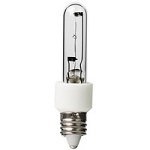
Single Ended Tubular
12 to 120 Volt -
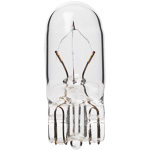
Festoon, Wedge, Rigid Loop
Xenon Light Bulbs -

Double Ended
R7s Base - 120 Volt -

MR11
6 to 120 Volt -
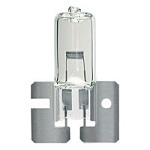
Medical and Dental
-
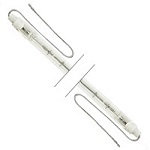
Quartz Infrared Heater
Lamps -
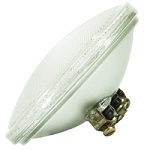
PAR36
-
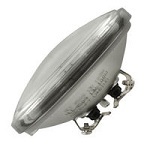
Aircraft Lighting
-
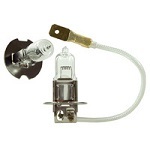
Automotive, Aircraft, Machinery Bulbs
Halogen Specialty Bulbs
Why Halogens Bulbs over Incandescent?
In short, halogen light bulbs feature a longer operating life and higher luminous efficacy and color temperature but use the same amount of power as incandescents. How can such a small lamp perform better than a standard incandescent? The difference is in the inert gas used inside the bulb. Halogen lamps are filled a halogen gas such as iodine or bromine. This gas is heated up and bonds with the vaporizing tungsten molecules when a light bulb is turned on. The gas re-deposits the tungsten back onto the filament, improving the lifespan of the light and keeping the bulb clean and clear of tungsten.
Since the bulbs are made from a much stronger material (quartz or high-melting-point glass), the gas pressure can be higher and the bulb can burn hotter than a standard incandescent. The increased heat means that halogens are able to reach higher color temperatures with the best CRI possible.
A Variety of Types with Multiple Uses
Because of their small size, halogen lamps are able to fit many form factors with an output that equals many tasks. For instance:- MR16 halogen lamps use a reflector bulb for spot and flood lighting. The small size makes them perfect for hidden lights near displays or for track lighting. They also come in both bi-pin and twist & lock (GU) base types.
- For more general spot or flood lights, PAR halogens make great replacements for high color saturation lighting in downlighting. The PAR shaped lamps fit and replace identical incandescent lamps easily. The newer lamps are even IR coated to reduce heat output.
- Colored halogen bulbs are also popular. Powerful, long-lasting lighting in an array of colors that's perfect for stage lighting or celebrations. You'll often find colored halogen bulbs used in ambient lighting when regular color temperatures don't meet your needs.
- Standard shape household lights have also become popular. Since halogen light bulbs are more efficient than traditional incandescents, they're more likely to meet the new regulations for illumination efficacy giving you the same light intensity you're used to while using less energy.
